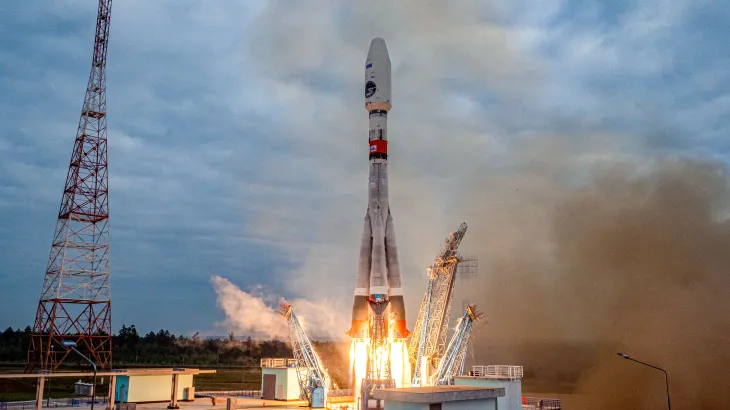Russia’s recent mission to land on the Moon has unfortunately ended in disappointment. Their spacecraft, Luna-25, lost control and collided with the Moon’s surface just ten days after its launch on August 10th. Russia’s space agency, Roscosmos, confirmed the incident and described it as an “abnormal situation” before revealing the crash.
Luna-25 had a crucial mission ahead of it. It was scheduled to explore the Moon’s south pole, specifically searching for water ice and studying its origins and potential connection to water on Earth. The spacecraft was also equipped to test new technology and examine the moon’s soil. Initially, it was supposed to orbit the moon for five days before landing on August 21st. Before the crash, Luna-25 captured various images, including one of the Zeeman crater near the south pole.
If successful, Luna-25 would have been the first spacecraft to land on the moon’s south pole. However, India may now claim that title, as their spacecraft launched on July 14th and is expected to touch down on August 23rd, potentially beating Russia in the race.
The Resurrection of Luna
The Luna program, initiated by the Soviet Union in the late 1950s, holds a special place in the history of space exploration. It marked humanity’s first steps toward the Moon and yielded a series of missions that achieved significant milestones, including the first human-made object to reach the Moon and the first successful soft landing.
After a long hiatus, Russia resurrected the Luna program with Luna-25, also known as Luna-Glob. This mission aimed to continue the legacy of lunar exploration and build on the knowledge gained from previous lunar missions, both Russian and international.
Scientific Objectives of Luna-25
Luna-25 had several scientific objectives, including:
- Surface Examination: The spacecraft was equipped with scientific instruments to study the lunar surface’s composition, properties, and topography. This data would contribute to our understanding of the Moon’s geological history.
- Water Ice Detection: Luna-25’s payload included instruments designed to detect water ice, a valuable resource for future lunar missions, including human exploration.
- Landing Site Selection: The mission was intended to aid in selecting suitable landing sites for future lunar missions, particularly those involving human crews.
- Technological Testing: Luna-25 was also a platform for testing new technology and systems for landing on the Moon and operating in its challenging environment.
A Bittersweet End
On October 1, 2021, Luna-25 successfully performed its descent and landing maneuver, marking a significant milestone. However, just a few days later, on October 13th, the Russian space agency Roscosmos confirmed that the spacecraft had crashed into the Moon’s surface. The exact cause of the crash remains under investigation.
Lessons for the Future
While the outcome of Luna-25 was not as intended, it provides several valuable lessons for future lunar missions:
- Complexity of Lunar Landings: Landing on the Moon, even with decades of experience, remains a complex and challenging endeavor. Precise control and communication are essential for a successful landing.
- Robust Planning and Redundancy: Future lunar missions must incorporate robust planning and redundancy to mitigate potential failures.
- Data and Experience: Even missions that do not go as planned can yield valuable data and experience that inform future missions and improve our understanding of lunar conditions.
- International Collaboration: Lunar exploration is a global effort, and collaboration among space agencies can help share knowledge and reduce risks.
Moon missions have become a global focus, with countries like the United States, China, Japan, Mexico, Canada, and Israel also planning their own missions to reach and explore the Moon. The United States aims to have humans orbiting the Moon by 2024 and making a lunar landing in 2025.
